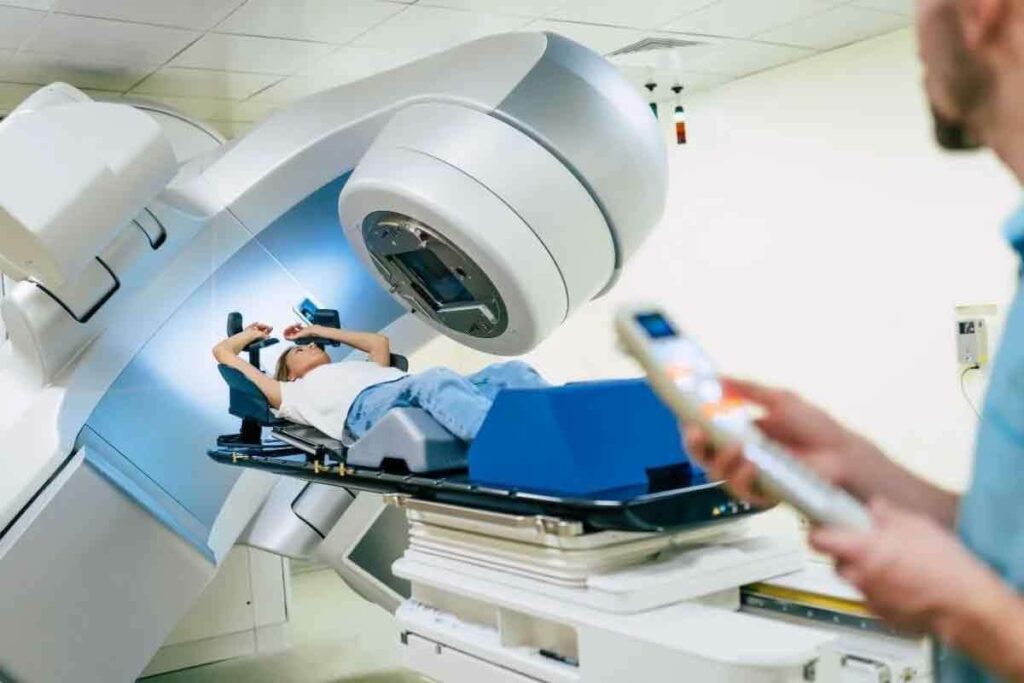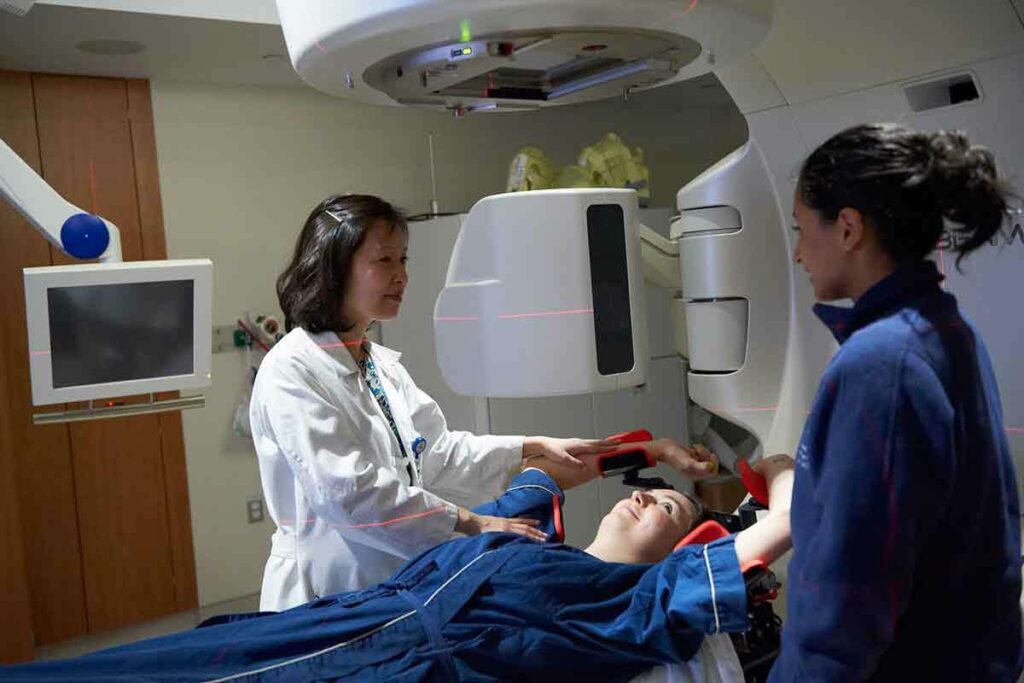
After a nuclear bomb goes off, the area is filled with dangerous radiation. How long does radiation last depends on the radioactive isotopes released and their half-lives. Half-life is the time needed for half the radioactive atoms to decay. Some radioactive materials can last for just days, while others remain hazardous for years or decades. Knowing how long radiation lasts is key to understanding the dangers of a nuclear blast and planning safety measures accordingly.
The time radiation stays around depends on radioactive half-lives. Half-lives vary a lot among different materials.
Radioactive materials from a nuclear event can have half-lives from seconds to billions of years. This big difference affects how long we’re exposed to radiation. At Liv Hospital, we’re dedicated to giving top-notch care. We make sure you have the right info on nuclear fallout’s effects and how long it lasts.

It’s key to know how nuclear explosions work and what kinds of radiation they send out. This helps us understand their effects on the environment and living things.
Nuclear explosions are huge events that release a lot of energy. This energy comes out as light, heat, and radiation. The radiation can be of different types, based on when it’s released and its characteristics.
Nuclear weapons fall into two main groups: atomic bombs and hydrogen bombs. Atomic bombs get their power from nuclear fission, where an atom splits into smaller parts. Hydrogen bombs, though, use nuclear fusion, where light nuclei merge to form a heavier one, releasing energy.
The kind of nuclear weapon used changes the radiation it releases. Fission-based weapons usually make more radioactive fallout than fusion-based ones.
The radiation from a nuclear explosion can be split into initial radiation and residual radiation. Initial radiation is what’s released in the first minute, mainly gamma rays and neutrons. It’s very strong right after the explosion and then quickly goes down.
Residual radiation lasts longer. It includes fallout that can spread over a big area around the explosion. The amount of residual radiation depends on the nuclear weapon type, explosion size, and weather.
Radiation levels are measured in sieverts (Sv), grays (Gy), and rads. Sieverts show the biological effect of radiation, while grays and rads measure the dose absorbed. Knowing these measurements is important for understanding radiation’s effects on health and the environment.
Many things can affect radiation levels. These include how far you are from the explosion, the nuclear weapon type, and weather conditions.
| Radiation Type | Characteristics | Measurement Units |
| Initial Radiation | Emitted within the first minute; mainly gamma rays and neutrons | Sieverts (Sv), Grays (Gy) |
| Residual Radiation | Lasts longer; includes radioactive fallout | Rads, Sieverts (Sv) |

When a nuclear weapon goes off, it releases a huge amount of radioactive stuff into the air. This is called nuclear fallout. It’s key to understanding how nuclear bombs affect the environment and people’s health.
Nuclear fallout happens when radioactive stuff gets thrown into the air after a nuclear blast. This stuff can include things like iodine, cesium, and strontium. These elements are made during the nuclear reaction. They turn into particles as they cool down.
The makeup of fallout material is complex. It depends on the type of nuclear device and what’s around it when it goes off. Common parts include:
Several things affect where nuclear fallout goes:
Knowing these factors helps us guess and lessen the fallout’s impact on the environment and people.
Half-life is key to knowing how long radiation lasts after a nuclear blast. It’s the time it takes for half of the atoms in a sample to decay. This decay is what makes the radiation.
Radioactive half-life is a basic trait of unstable elements. These elements, or isotopes, lose energy by emitting radiation. This process makes them more stable. The half-life shows how fast this decay happens.
Key aspects of radioactive half-life include:
Isotopes are divided into short-lived and long-lived types. Short-lived isotopes decay in seconds to days. Long-lived isotopes can last years, centuries, or millennia.
| Isotope | Half-Life | Category |
| Iodine-131 | 8 days | Short-Lived |
| Cesium-137 | 30.2 years | Long-Lived |
| Plutonium-239 | 24,100 years | Long-Lived |
Experts say knowing the difference between short-lived and long-lived isotopes is vital. It helps us understand the immediate and long-term effects of nuclear fallout.
“Nuclear fallout can have both immediate and long-term health effects, depending on the isotopes involved and their half-lives.” – A nuclear medicine specialist
Radioactive decay often leads to the creation of daughter products. These products can also be radioactive, starting a decay chain. A decay chain is a series of isotopes, each decaying into the next, until a stable isotope is reached.
For example, Uranium-238 decays into Thorium-234, which then decays into Protactinium-234, and so on. This chain ends when Lead-206, a stable isotope, is formed. Understanding these chains helps predict long-term radiation levels and the types of radiation emitted.
Studying half-lives, isotopes, and decay chains is key to understanding radiation after a nuclear event. This knowledge helps scientists and policymakers assess risks and develop strategies to reduce the effects of nuclear radiation.
Understanding the immediate aftermath of a nuclear event is vital. It helps us assess radiation levels and plan response efforts. The first hours and days are key to knowing the extent of radiation exposure and its effects on the environment and human health.
The initial radiation from a nuclear explosion is very intense. This radiation includes gamma rays and neutrons. These are emitted during and right after the detonation.
The intensity of initial radiation can cause acute radiation syndrome (ARS) in exposed individuals. The dose received determines the severity of ARS. Higher doses lead to more severe symptoms and higher mortality rates.
The 7-10 rule is a key principle in understanding radioactive fallout decay. It states that for every seven-fold increase in time, the radiation dose rate decreases by a factor of 10. For example, if the radiation dose rate is 1 Gy/h at 1 hour, it will decrease to 0.1 Gy/h at 7 hours, and further to 0.01 Gy/h at 49 hours (7^2 hours).
“The 7-10 rule provides a simple yet effective way to estimate the decrease in radiation levels over time, aiding in the planning of emergency responses and the assessment of radiation risks.” – Nuclear Safety Expert
| Time After Explosion | Radiation Dose Rate (Gy/h) |
| 1 hour | 1 |
| 7 hours | 0.1 |
| 49 hours | 0.01 |
Effective emergency response is critical after a nuclear event. The response timeframe depends on radiation decay and initial radiation intensity. Emergency responders need proper gear and monitoring equipment to assess and mitigate radiation exposure.
The 7-10 rule helps plan emergency response. It gives a guideline for radiation level decrease. This allows responders to make informed decisions about when it’s safer to enter contaminated areas and conduct relief operations.
Radiation from a nuclear bomb stays in the environment for weeks to months. This is mainly because of short-lived isotopes like Iodine-131. Knowing how these isotopes work is key to understanding the risks to people and the environment.
Iodine-131, with a half-life of about 8 days, is a big worry in the short term. It tends to build up in the thyroid gland. Other isotopes, like Molybdenum-99 and Neptunium-239, also add to the initial radiation risk.
As these isotopes decay, radiation levels drop quickly in the first few weeks. But their high levels at first can expose people in the area to a lot of radiation.
Radiation hotspots are areas with much higher radiation levels than others. These can happen because of wind patterns that drop fallout in certain spots.
There can be big differences in radiation levels in different places. It’s important to do detailed surveys to get a clear picture. This helps plan how to clean up and where it’s safe to live.
Decontamination means getting rid of or reducing radioactive stuff from surfaces and places. Methods include taking away topsoil, washing surfaces, and managing plants.
| Decontamination Method | Effectiveness | Challenges |
| Topsoil Removal | Highly effective for reducing radiation levels | Costly and requires disposal of radioactive soil |
| Surface Washing | Effective for buildings and hard surfaces | May not be effective for porous surfaces |
| Vegetation Management | Can reduce radiation uptake by plants | Long-term management required |
Decontamination plans need to be well thought out and done carefully. This is to protect workers and the public. The right method depends on the type of contamination and the area.
Cesium-137 and Strontium-90 are key players in the medium-term radiation effects after a nuclear blast. They have half-lives of about 30.2 years and 29.1 years, respectively. This makes them major contaminants for years and decades post-nuclear event.
Cesium-137 is very radioactive and can easily get into the food chain. It’s similar to potassium, so plants and animals absorb it. This can lead to humans getting exposed internally. Strontium-90 acts like calcium and gets into bones, raising the risk of bone cancer and other health problems. Both isotopes can stay in the environment for a long time, polluting soil, water, and air.
These isotopes stick around because they can move through different paths in the environment. Cesium-137 can attach to soil particles, making it less mobile but not gone. Strontium-90 moves more easily in some places, like where the soil is acidic.
The movement of Cesium-137 and Strontium-90 depends on soil type, rain, and human actions. They mostly stay in the top soil layers, where plants can absorb them or get washed away. Over time, they can spread to other areas, contaminating more land.
For example, lots of rain can wash them into the groundwater or carry them away, polluting water bodies. Human activities like farming and building can also stir up contaminated soil. This releases the isotopes into the air or makes them unsafe for humans and animals to eat.
The safety of areas with Cesium-137 and Strontium-90 depends on several factors. These include how much was deposited, how well it’s cleaned up, and how long it takes to decay. Generally, very contaminated areas might not be safe for decades or even centuries.
Trying to clean up these areas, like removing topsoil or using chemicals, can help lower radiation levels. But these efforts are expensive and might not fully remove the danger. As these isotopes break down, the radiation will lessen, making the area safer for people to live in.
In summary, the effects of radiation from a nuclear bomb are greatly influenced by Cesium-137 and Strontium-90. Knowing how they persist, move through the environment, and affect habitability is key to understanding the long-term impacts of nuclear fallout.
Nuclear explosions leave a lasting impact of radiation that can last for centuries. The effects of these events are not just immediate. They also extend far into the future, affecting environments and people for generations.
Plutonium and uranium are key radioactive elements from nuclear fallout. Plutonium-239 has a half-life of about 24,100 years. Uranium-238’s half-life is around 4.5 billion years. Their presence in the environment causes long-lasting contamination.
Geological sequestration is a method for managing long-lived radioactive waste. It involves isolating radioactive materials deep in geological formations, away from living organisms. The aim is to stop radionuclides from entering the environment.
The process includes:
The radiation from nuclear fallout can affect not just those exposed but also their descendants. The long-term presence of radioactive materials in the environment leads to continuous exposure. This can cause genetic mutations and health problems.
Key concerns include:
Understanding and reducing these long-term effects is key to managing the legacy of nuclear events.
Nuclear fallout is hard to see but can be found with the right tools. Knowing how to spot and find fallout is key to staying safe. It helps us know how much radiation is around and where it is.
Fallout from a nuclear event can look different. It might seem like a cloud of particles or dust on surfaces. Sometimes, it looks like a fine powder. But often, it’s not visible to the eye, so we need special tools to find it.
Visible signs of fallout include colored surfaces, strange dust, and changes in soil or water. If there’s a lot of fallout, the ground can be radioactive. We can find this with special gear.
Finding fallout means using special tools to measure radiation. Geiger counters, scintillators, and dosimeters are common. They can spot gamma, beta, and alpha radiation from radioactive stuff.
Radiation can pollute soil, water, and air. The signs of radiation in the environment can be small and hard to spot. Over time, it can harm local plants and animals and raise radiation levels in some spots.
It’s important to watch the radiation in the environment. This helps us know how bad the pollution is and how to clean it up. We do this by using special tools and testing soil, water, and plants.
Radiation exposure can cause many health problems. These range from immediate effects like acute radiation syndrome to long-term issues. It’s important to know these effects to understand how nuclear radiation affects health.
Acute Radiation Syndrome (ARS) happens when you get a lot of radiation quickly. The severity depends on how much and how long you’re exposed. Symptoms can be mild or severe, including nausea, fatigue, and even death.
ARS is divided into four stages based on the dose:
| Dose (Gy) | Symptoms | Prognosis |
| 0-1 | Mild nausea, fatigue | Survival likely |
| 1-2 | Moderate nausea, vomiting, hair loss | Survival is possible with treatment |
| 2-4 | Severe nausea, vomiting, diarrhea, and damage to bone marrow | Survival is possible but challenging |
| >4 | Severe symptoms, damage to the gastrointestinal system, and the central nervous system | Survival highly unlikely |
Years or decades after exposure, radiation can cause health problems. These include higher cancer and heart disease risks. The risk depends on the dose and how long you were exposed.
Radiation can harm your genes and reproductive cells. High doses can lead to genetic mutations in children. The damage depends on the dose and how long you were exposed.
Genetic and reproductive concerns include:
In conclusion, radiation exposure has complex effects on health. It’s important to consider both immediate and long-term impacts. Understanding these effects helps us reduce the risks of nuclear radiation.
Radiation from nuclear fallout stays in the environment, affecting health and future generations. Knowing how long radiation lasts from a nuclear bomb is key. It helps us understand the lasting impact of nuclear weapons.
The time radiation lasts changes based on the weapon type, initial radiation, and isotopes. It can stay for weeks to centuries. This affects not just the area around the blast but also wider areas.
The legacy of nuclear weapons is marked by lasting radiation risks. It’s important to acknowledge these risks. This helps us find ways to lessen the fallout’s effects and aim for a safer future.
The time radiation lasts after a nuclear bomb varies. It depends on the bomb’s type and size, the explosion’s height, and the environment. Radiation levels drop over time, but how fast it happen changes with the isotopes present.
Nuclear fallout is the radioactive particles released into the air after a nuclear explosion. These particles can spread with the wind, contaminating large areas.
The time it takes for radiation to decrease depends on the isotopes’ half-lives. Some isotopes, like Iodine-131, decay quickly. Others, like Cesium-137 and Strontium-90, stay radioactive for years or decades.
Exposure to radiation can cause immediate and delayed health problems. Immediate effects include acute radiation syndrome. Delayed effects include increased cancer risk and genetic mutations. The severity of these effects depends on the dose and duration of exposure.
Specialized equipment, like Geiger counters and radiation spectrometers, can detect nuclear fallout. These tools measure radiation intensity and energy, helping identify specific isotopes and assess radiation levels.
The 7-10 rule is a guideline for radiation decay. It suggests that radiation levels decrease by a factor of 10 for every 7-fold increase in time after the explosion.
Radiation from a nuclear bomb’s duration varies by isotope. Immediate radiation occurs right after the explosion. Residual radiation can last years, decades, or even centuries.
The half-life of a nuclear bomb varies by isotope. Different isotopes have half-lives ranging from seconds to thousands of years.
Radiation can contaminate soil, water, and air, harming the environment and living organisms. Radioactive isotopes can be absorbed by plants and animals, entering the food chain and causing ecological damage.
Decontamination efforts can reduce radiation levels, but their success depends on the contamination type and extent. In some cases, decontamination may not be feasible or cost-effective.
Long-term radiation exposure concerns include increased cancer risk, genetic mutations, and other health issues. It can also affect future generations’ health and well-being.
Subscribe to our e-newsletter to stay informed about the latest innovations in the world of health and exclusive offers!
WhatsApp us